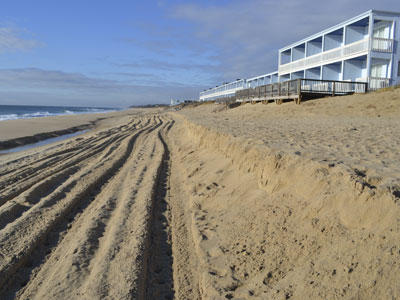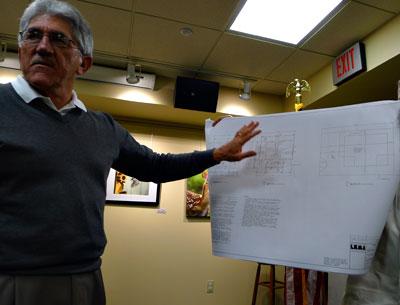Government Briefs 12.04.14
Government Briefs 12.04.14
East Hampton Town
Heating Oil Assistance
East Hampton Town residents who wish to apply to the federal Home Energy Assistance Program for help in paying winter heating bills can get some one-on-one assistance with the application through the town’s Department of Human Services. Also available are emergency benefits, to pay for heating costs when fuel is running low or heat is scheduled to be shut off, and grants to low-income homeowners to cover heating equipment repair or replacement.
Eligibility for HEAP benefits are based on income, household size, the primary heating source, and the presence of a household member who is disabled, under age 6, or 60 or older. Maximum monthly income for eligibility is $2,194 for a single-person household; $2,869 for a two-person household, and $4,219 for a household of four.
Additional information and applications are available online at otda.ny.gov/programs/heap, or by phone through the HEAP hotline at 853-8825. Those who wish personal assistance may call Liliana Rodriguez at the town Human Services Department.
Kiln Proposed
The members of the Clay Art Guild of the Hamptons would like to put up a kiln on a former Bistrian property off Fresh Pond Road in Amagansett that now belongs to the town. The group has 90 members, said Jim Zajac, who presented the proposal to the town board on Tuesday, but the kiln would be open for use by the public as well as members. Mr. Zajac said the kiln, which would be fired by wood, was chosen for its low carbon footprint. He added that wood firing can be done safely and without excessive smoke.
Town Supervisor Larry Cantwell asked that the group submit a plan showing public access. Town Councilwoman Sylvia Overby, who is the board’s liaison to the East Hampton Arts Council, and Councilman Peter Van Scoyoc, who works with a committee assigned to develop use and management plans for public properties, said they would work with the guild on the proposal.
Septic Plant Shuttered
East Hampton Town is no longer accepting septic waste at its shuttered scavenger waste plant for transfer to treatment facilities elsewhere, a move that town officials expect will eventually save $800,000 a year. The treatment plant has been inoperative for several years while its future has been debated, but the town continued to accept septic waste from private carters and arranged to have it trucked away.
The town board voted to stop that practice earlier this year, based on the recommendation of a consultant who is preparing a comprehensive wastewater management plan. Only two businesses had reportedly been using the service.
The future of the plant, which would require costly repairs and upgrades to be reactivated, is to be determined in the context of the overall wastewater plan.
Jet Skis at Town Ramps?
Personal watercraft such as Jet Skis could take off from East Hampton Town launching ramps under a proposed change to the town code, discussed by the town board at a work session on Tuesday.
The Springs Citizens Advisory Committee, which had been asked by Martin Drew, a resident of the hamlet, to consider the idea, endorsed it in a split but majority vote, Ed Michels, who heads the town’s Marine Patrol, told the board.
Mr. Michels said he would not object to allowing the craft to be launched from town ramps, but suggested that only certain ramps be designated — those in close proximity to open waters, where their use is allowed. They are prohibited from use in harbors.
Jet Skis and the like are quieter and more stable now than they used to be, Mr. Michels said, posing less of a noise nuisance or safety issue. Allowing use of the ramps could curb a growing trend for personal watercraft owners to launch from various bay beaches, he added, which he said was becoming a problem.
Supervisor Larry Cantwell asked if anyone was seeing an “overwhelming demand” to open up town ramps for use by personal watercraft, and both Mr. Michels and Diane McNally, the clerk of the town trustees, said adequate parking could be an issue at the town dock site at Gann Road. Fishermen using the dock also use the parking lot there, they said, as do out-of-towners. That lot is not limited to resident-parking only.
Call for New Center
Calling the building on Springs-Fireplace Road in East Hampton now used as a senior citizens center inadequate, a committee appointed by the town board has asked that the town come up with a new one.
A report presented to the board at a work session on Tuesday by Mary Ella Moeller said that in the coming years residents of East Hampton aged 65 and up will be more than double the number of school-age children.
The town also should study ways to increase transportation services for senior citizens, Ms. Moeller said, and create a committee to work with Southampton Town representatives and Southampton Hospital on improving access to medical services. In the short term, Ms. Moeller said, a committee should be created to develop new programs for older adults and an information campaign, including an online and printed calendar, should be launched.


